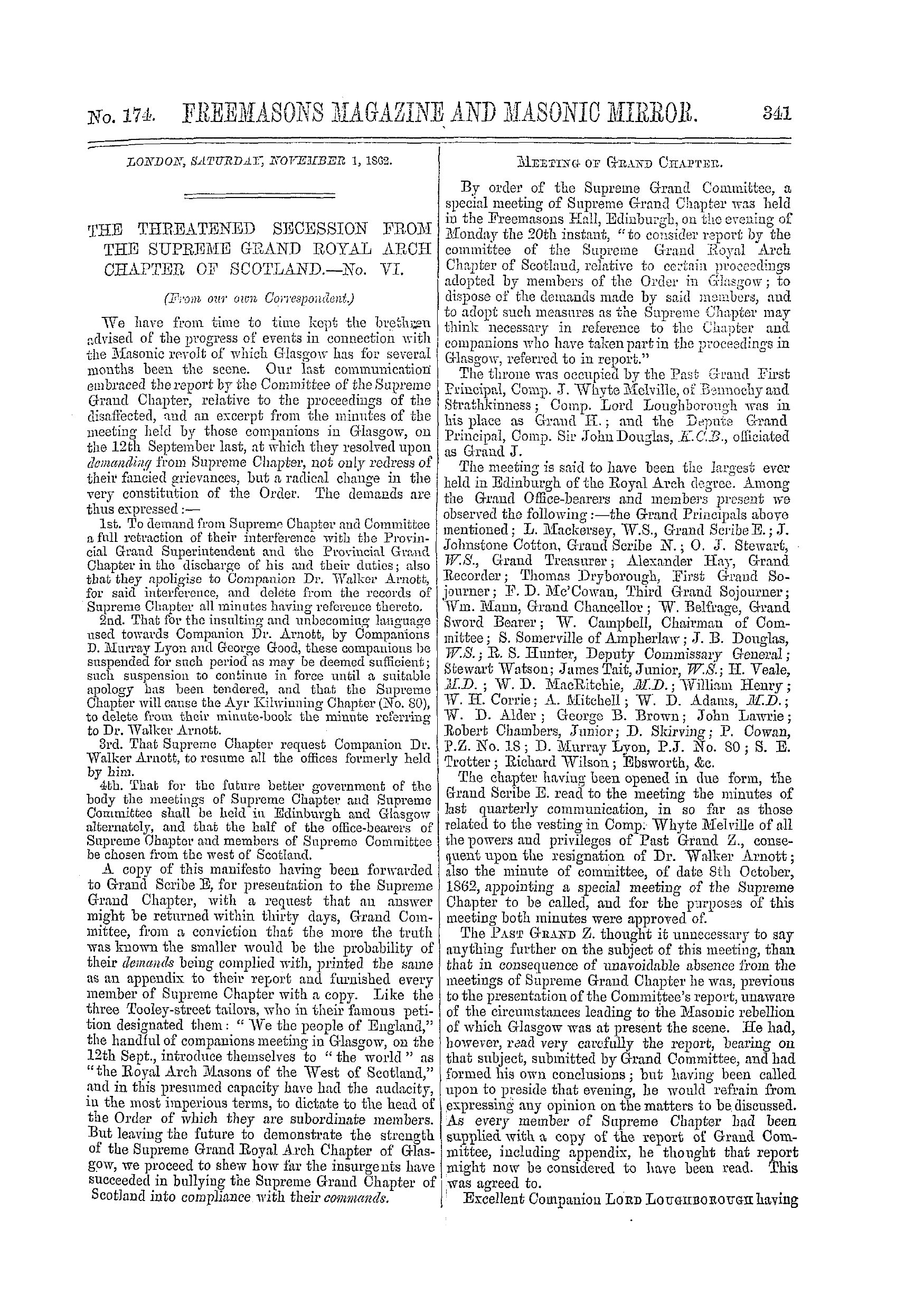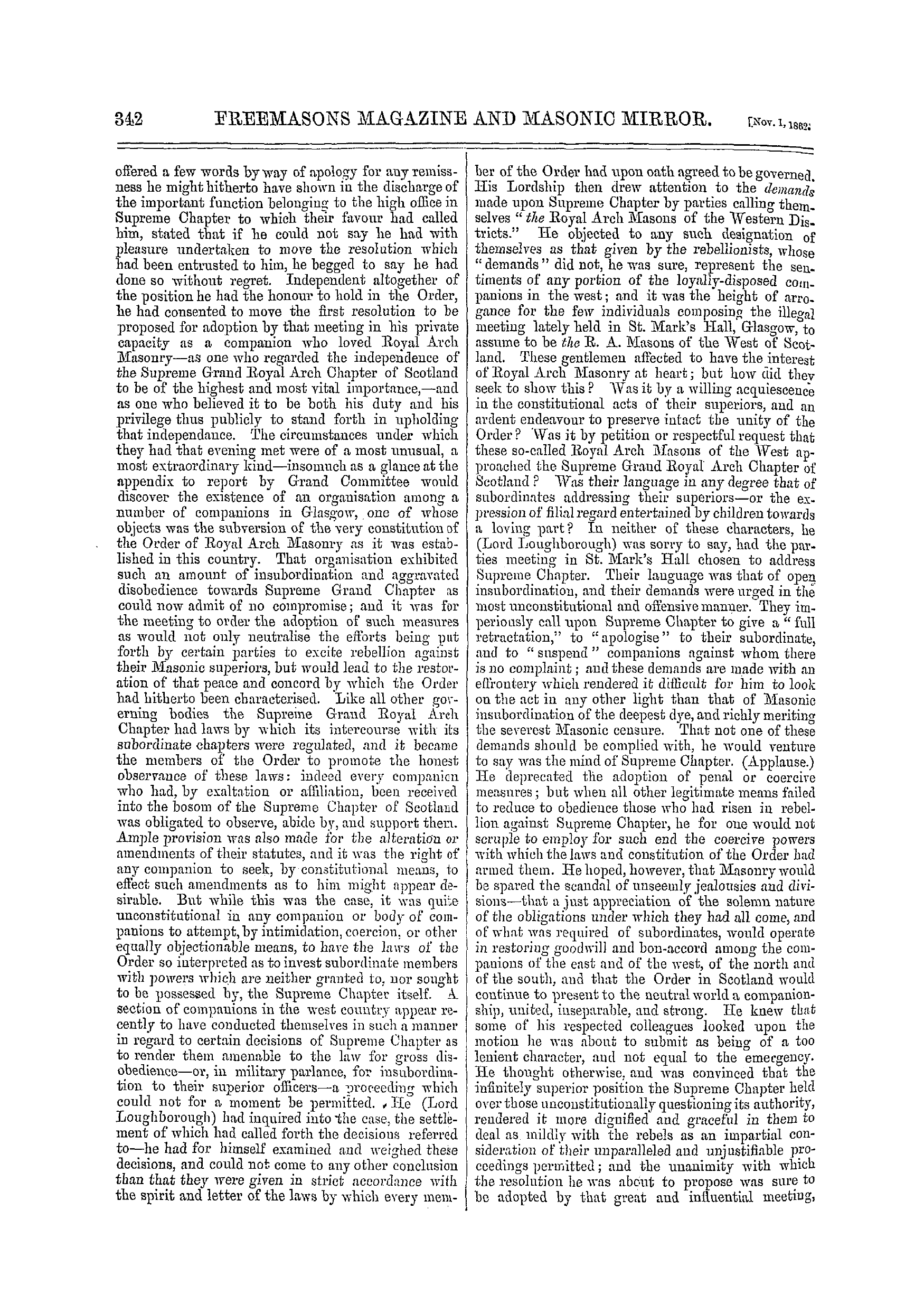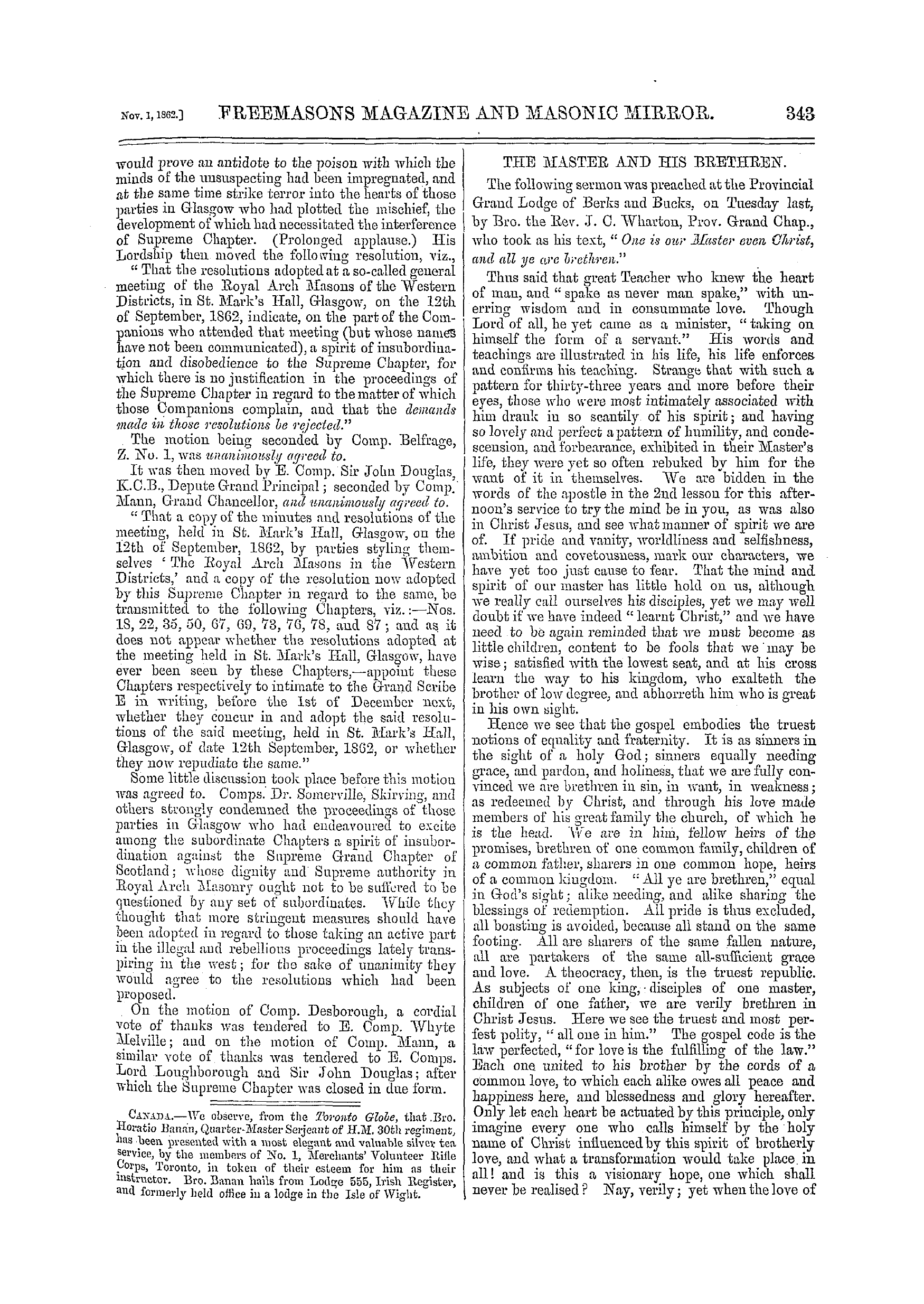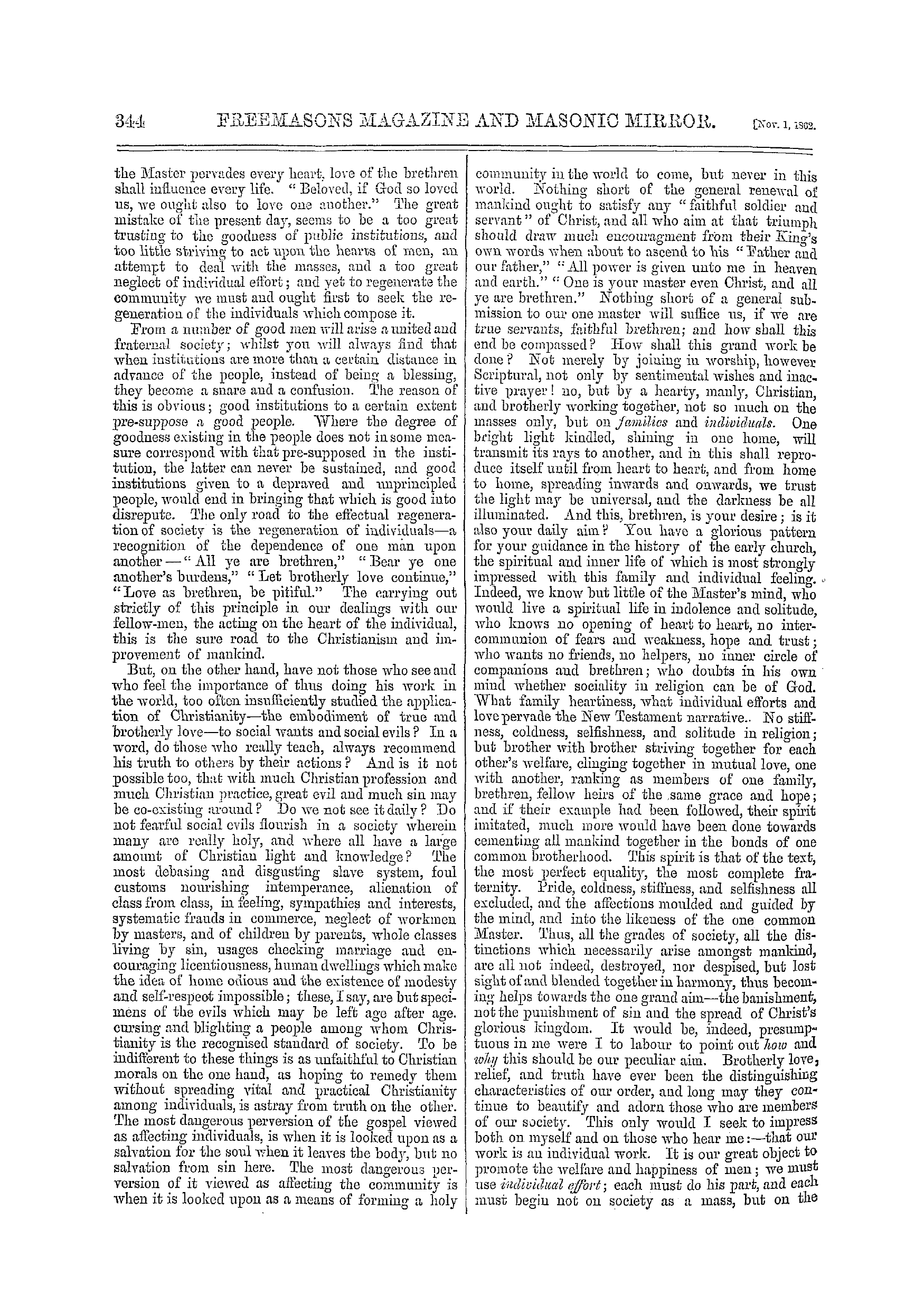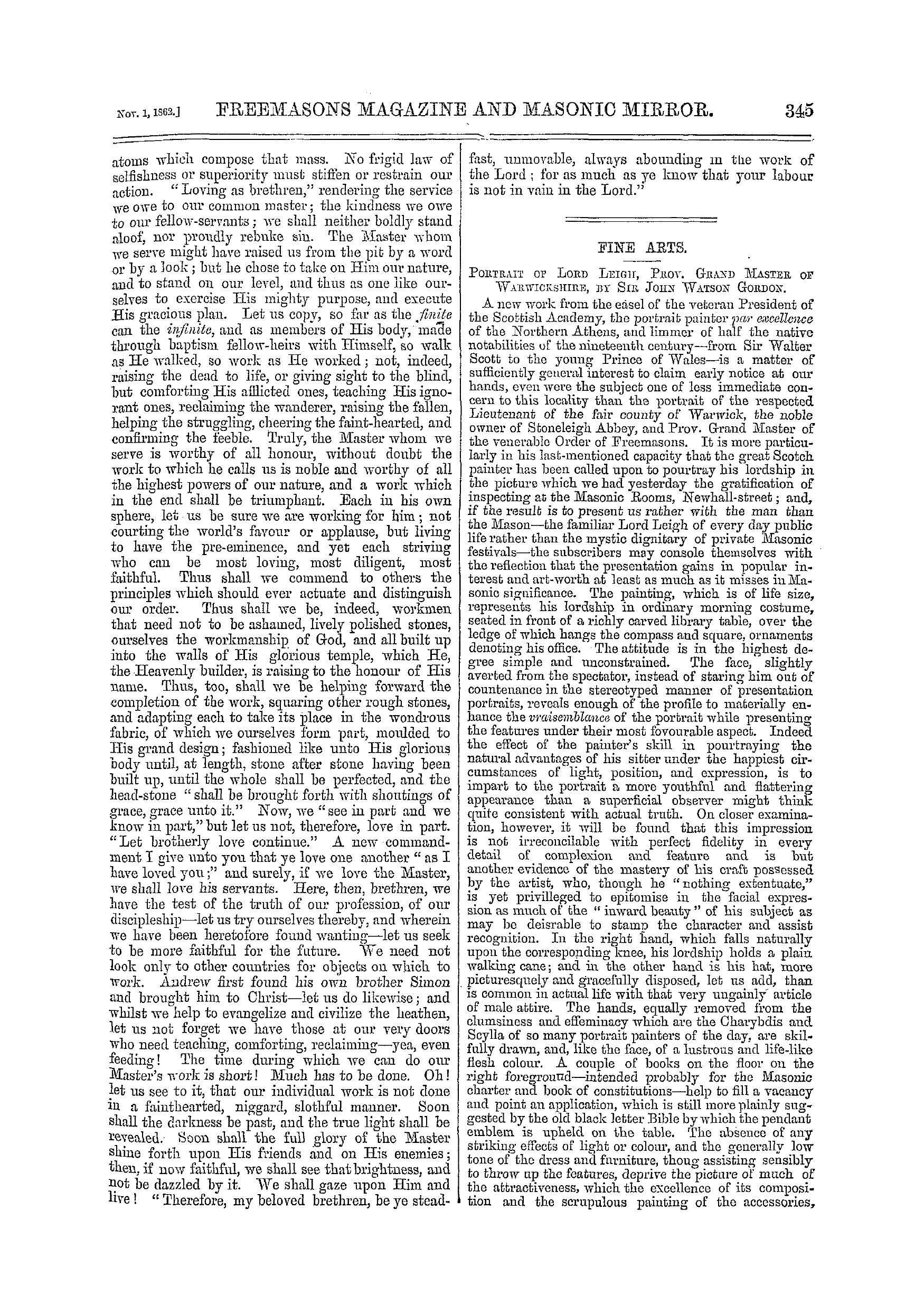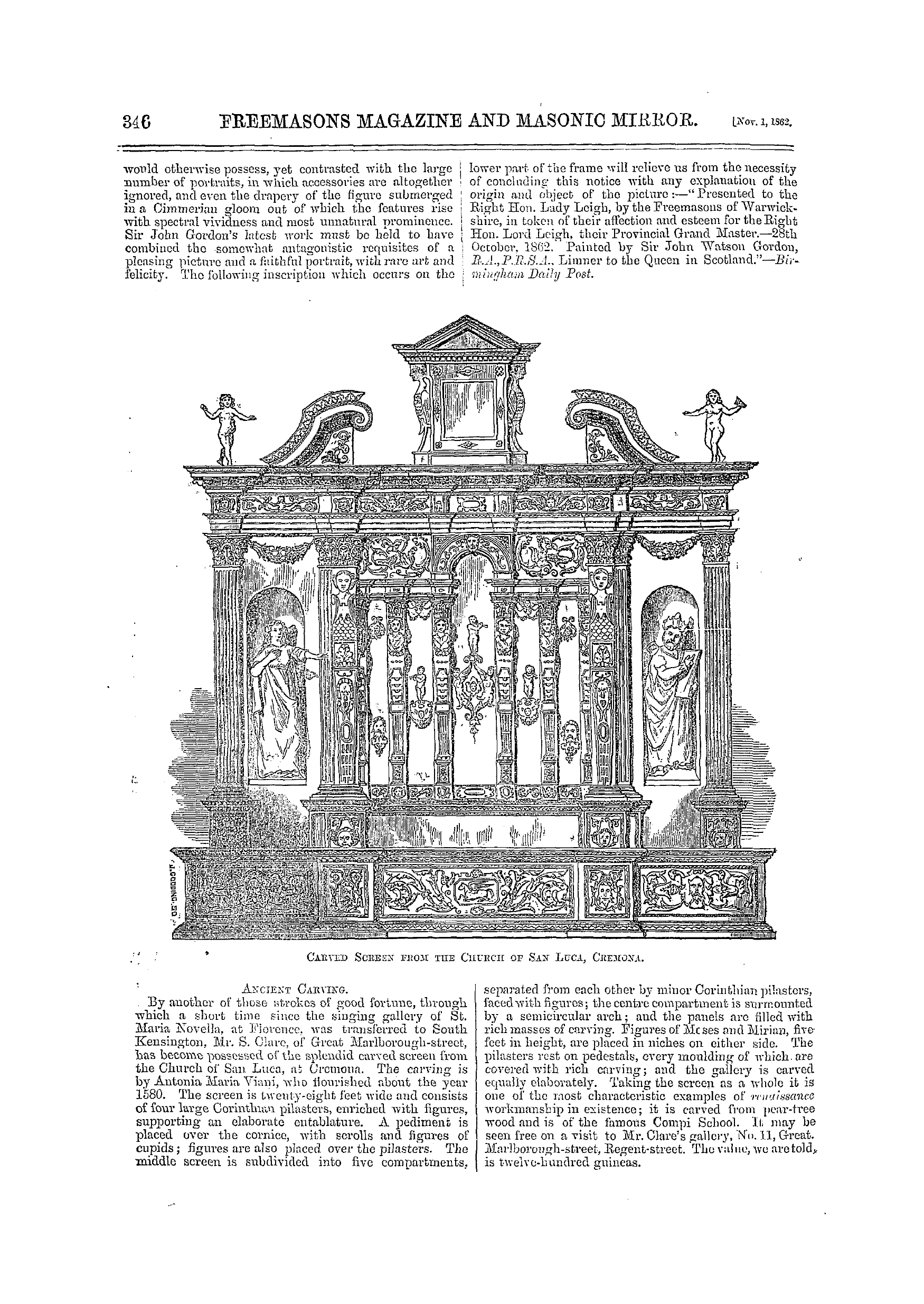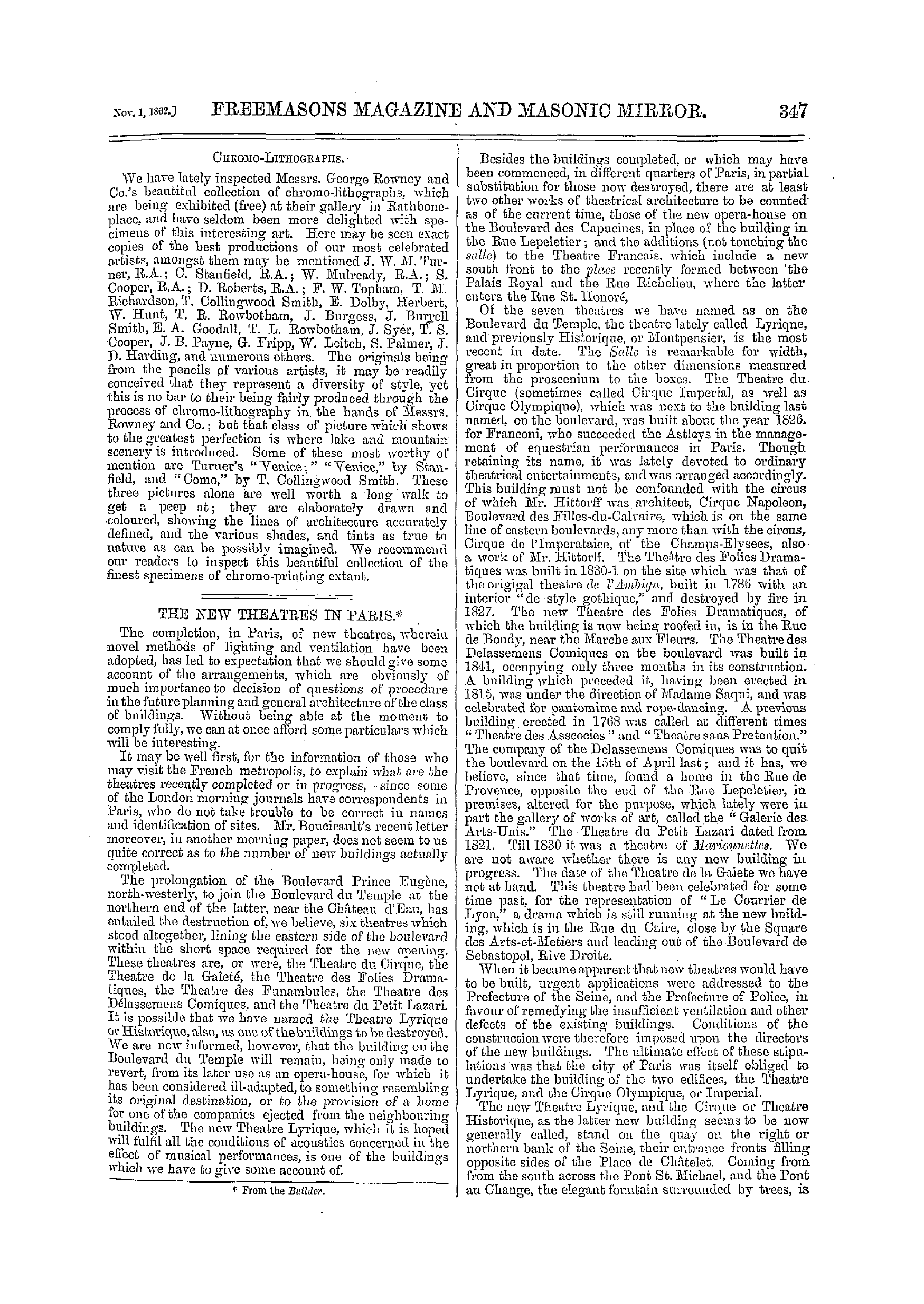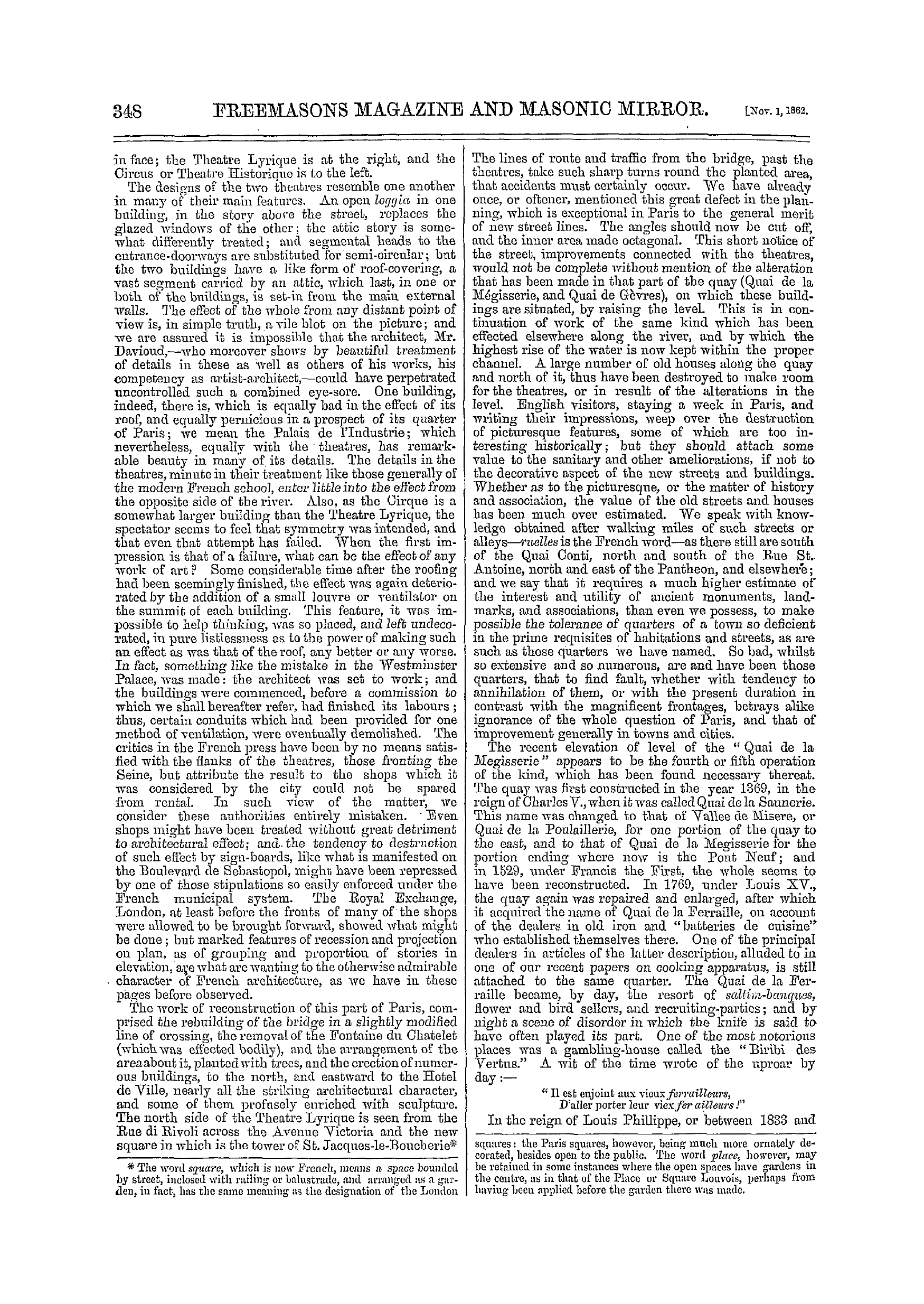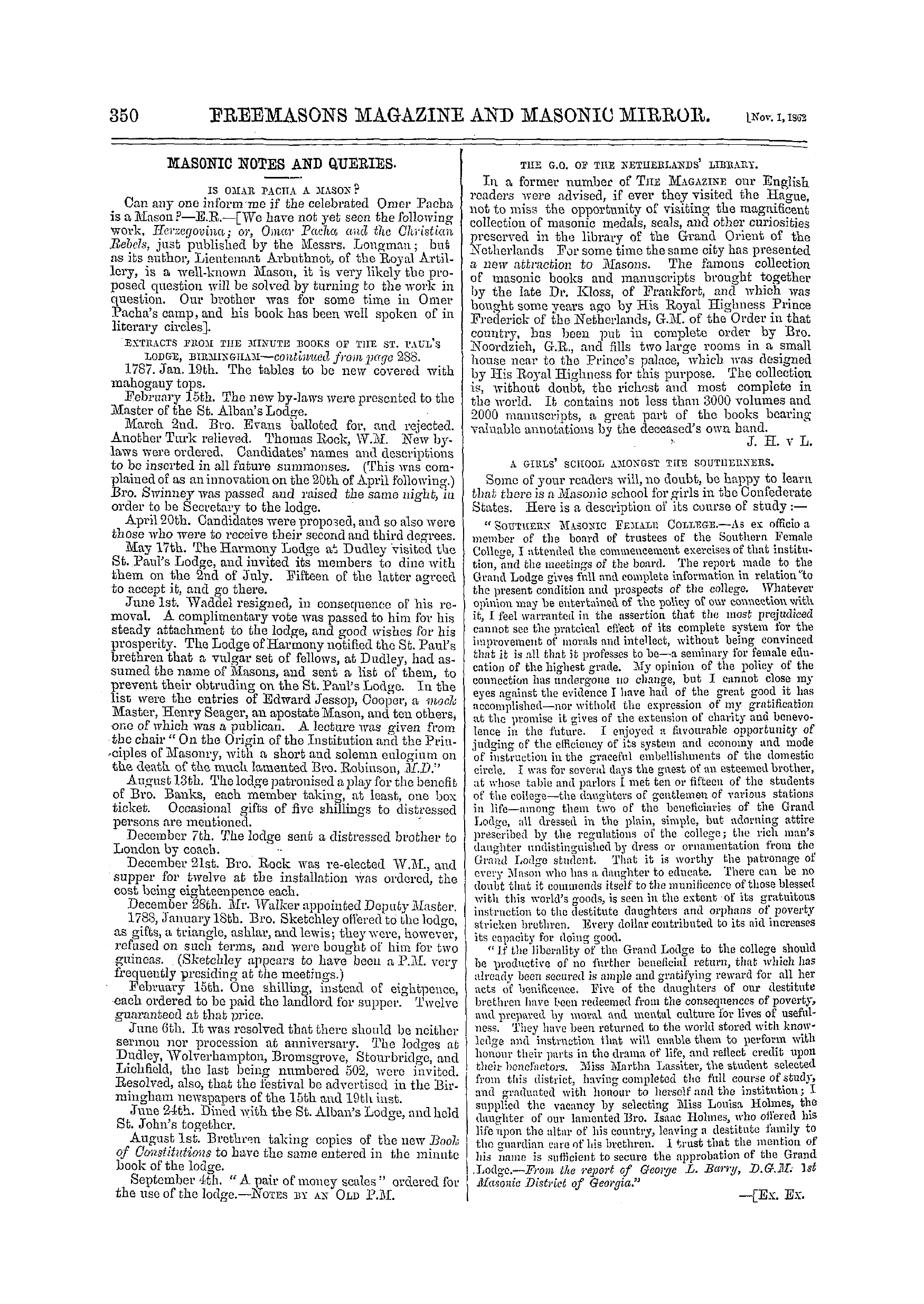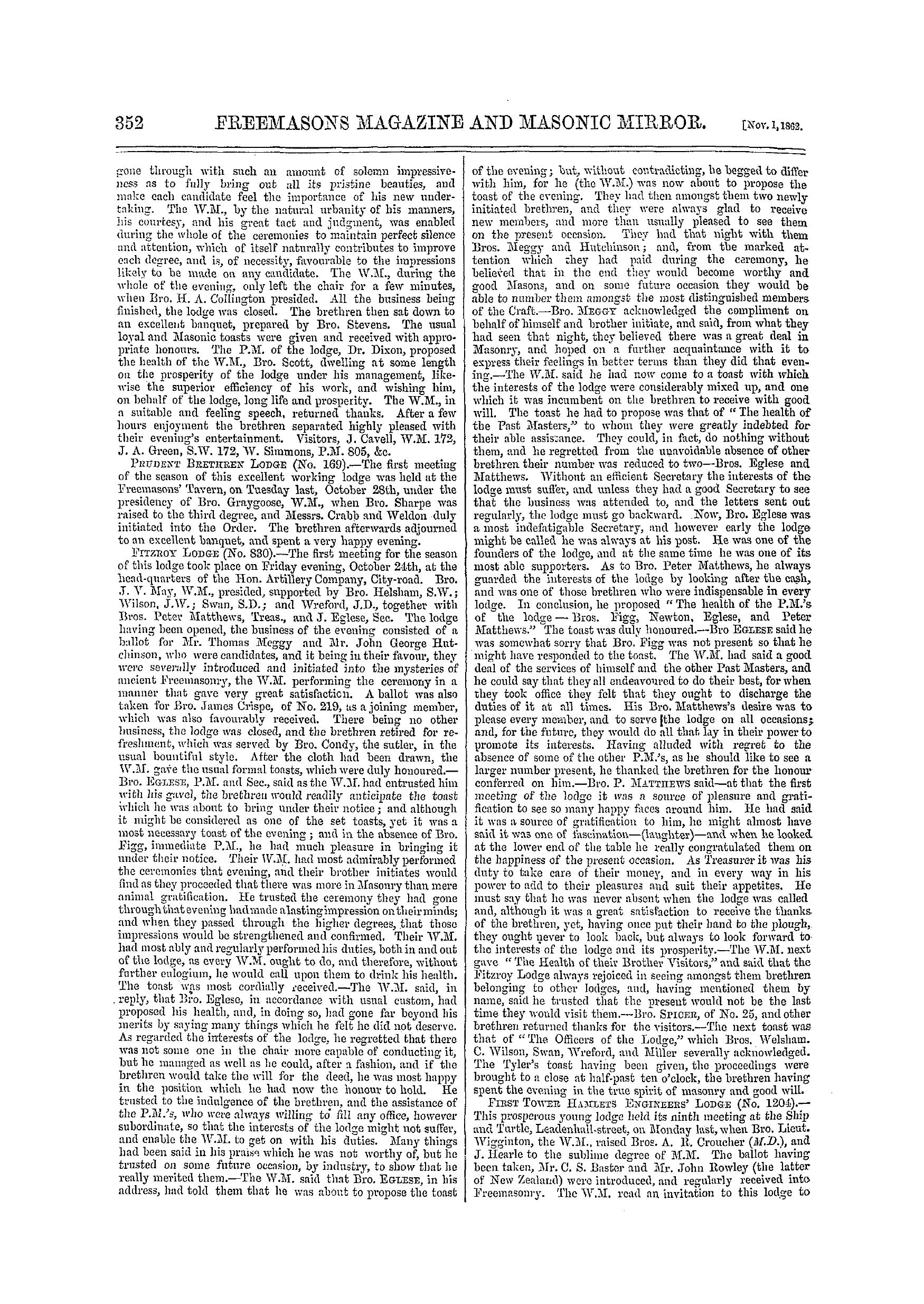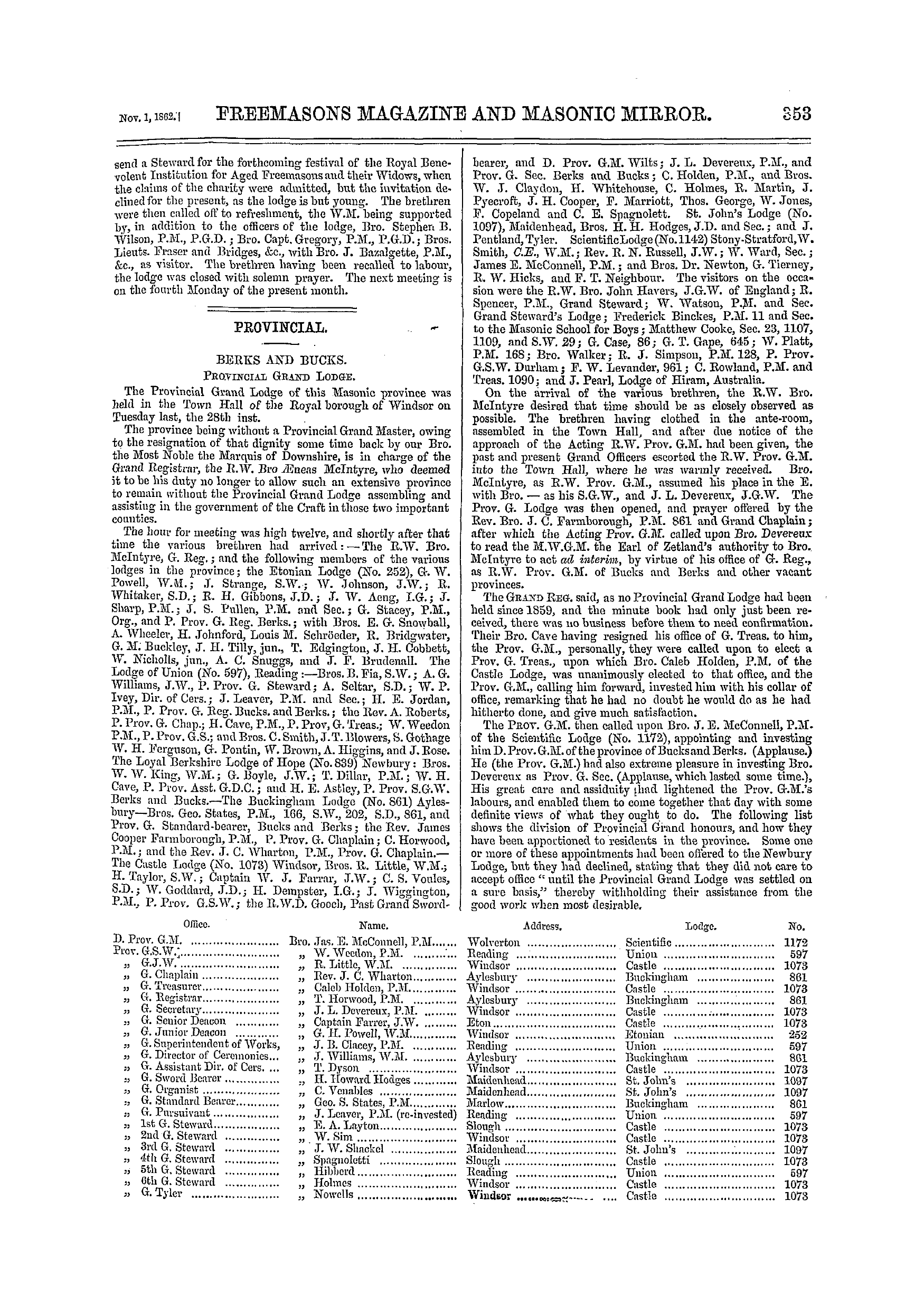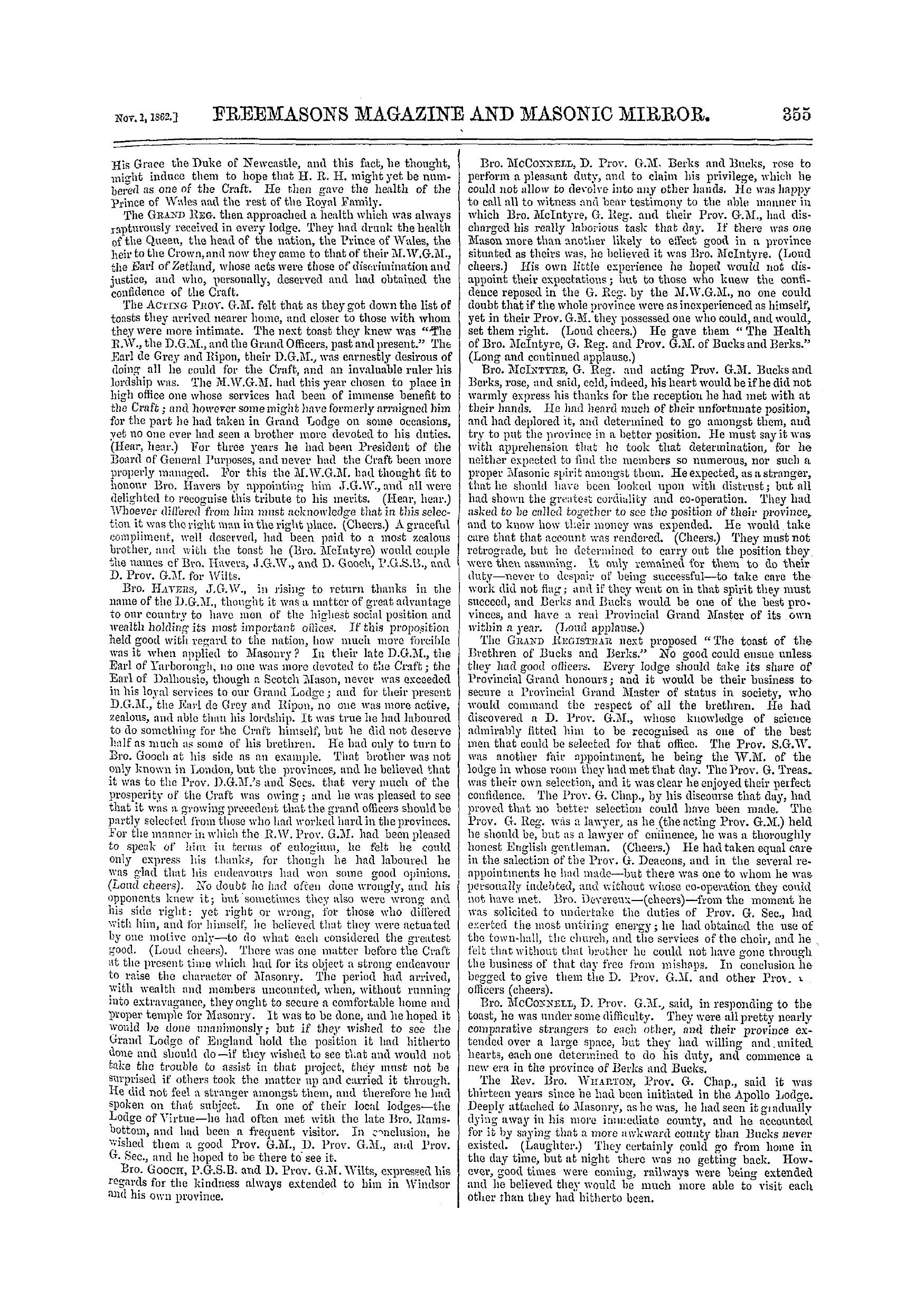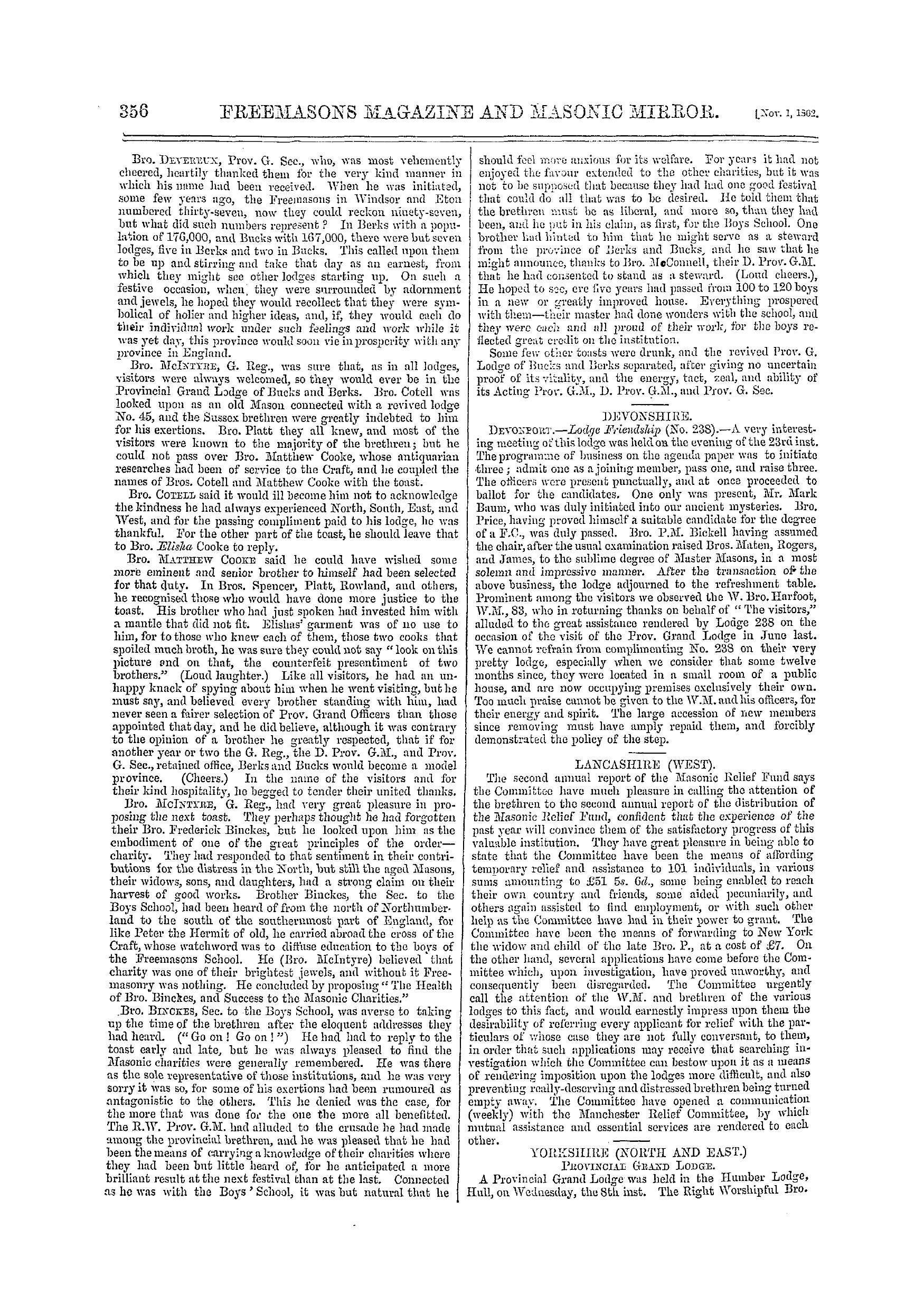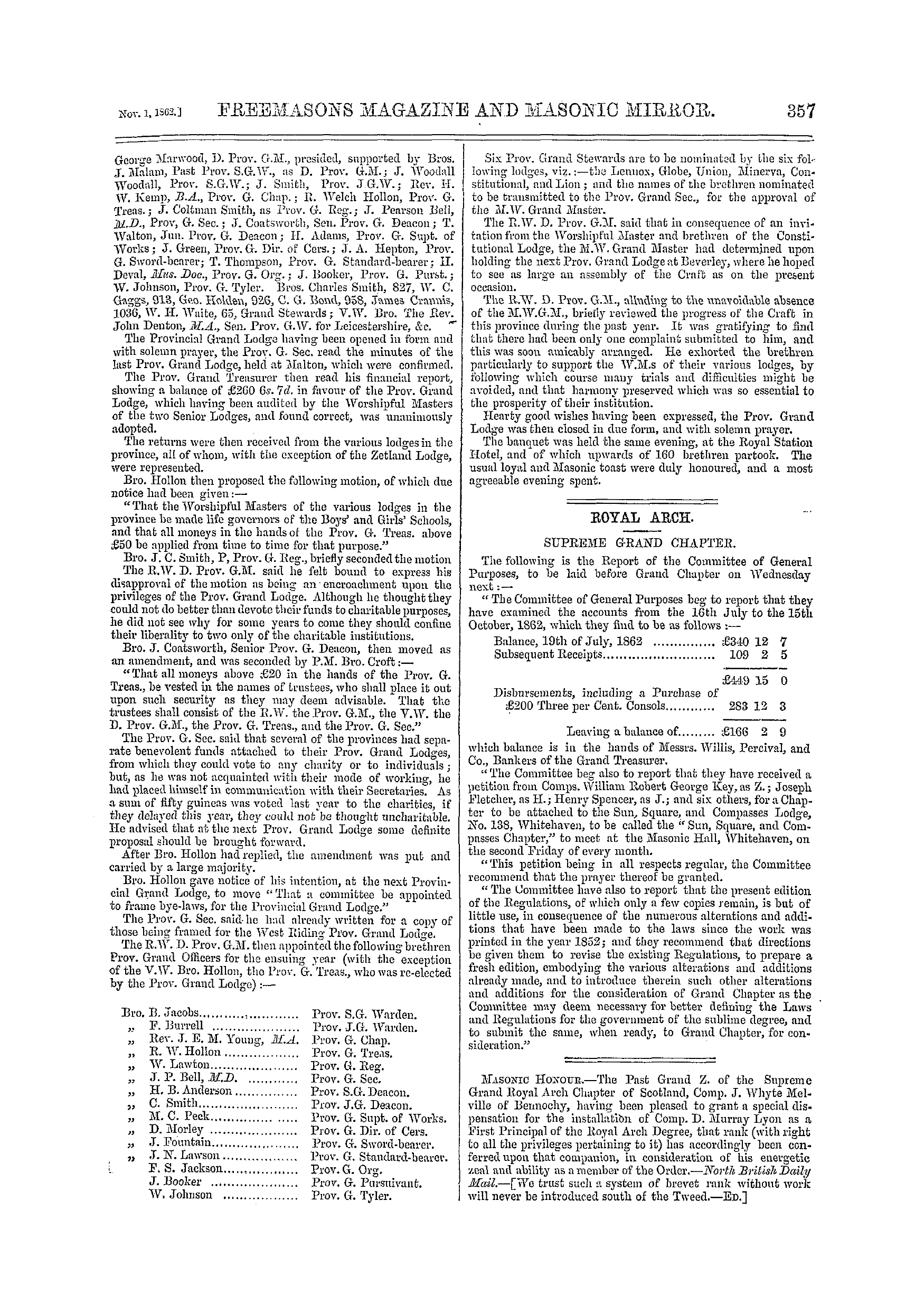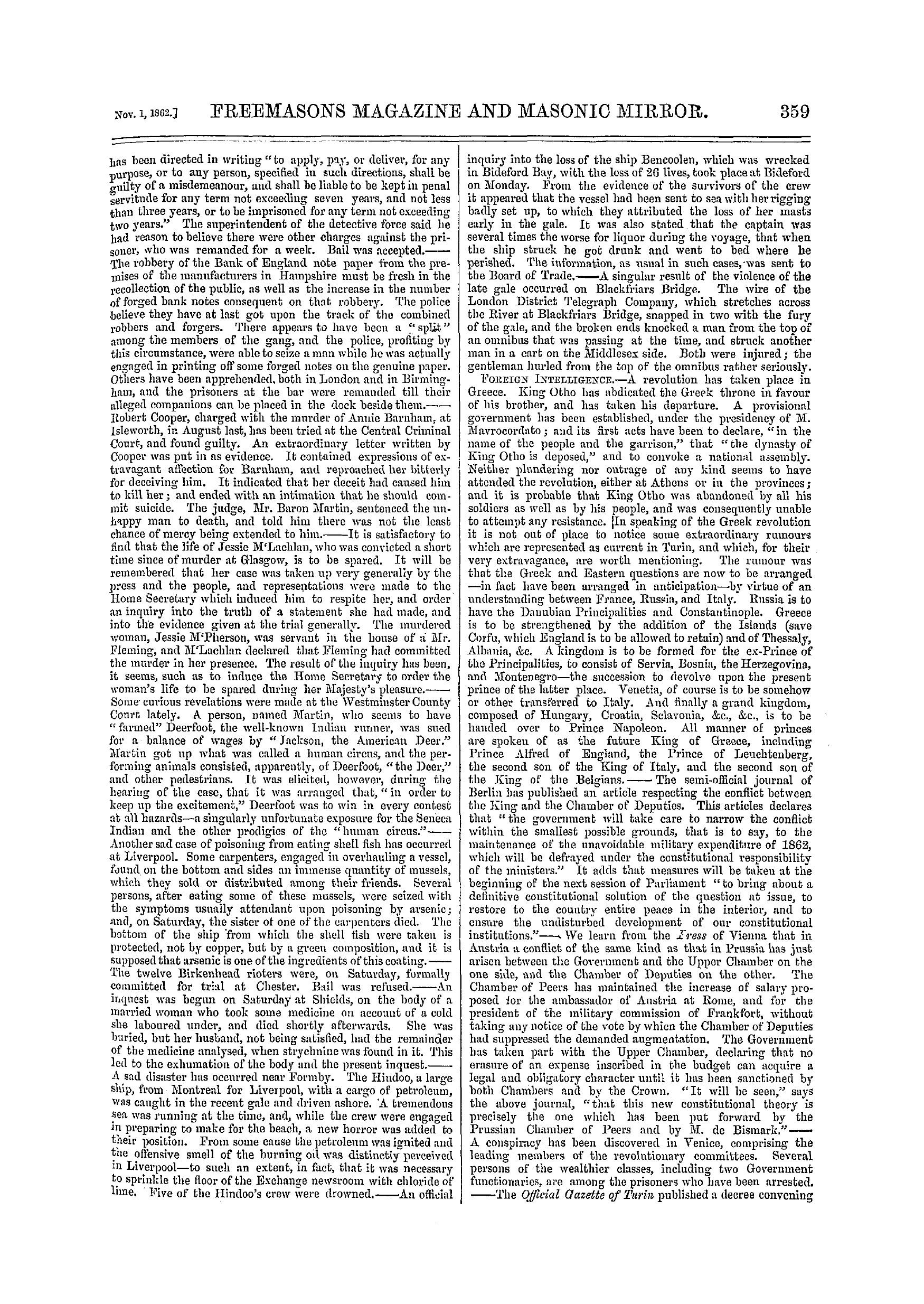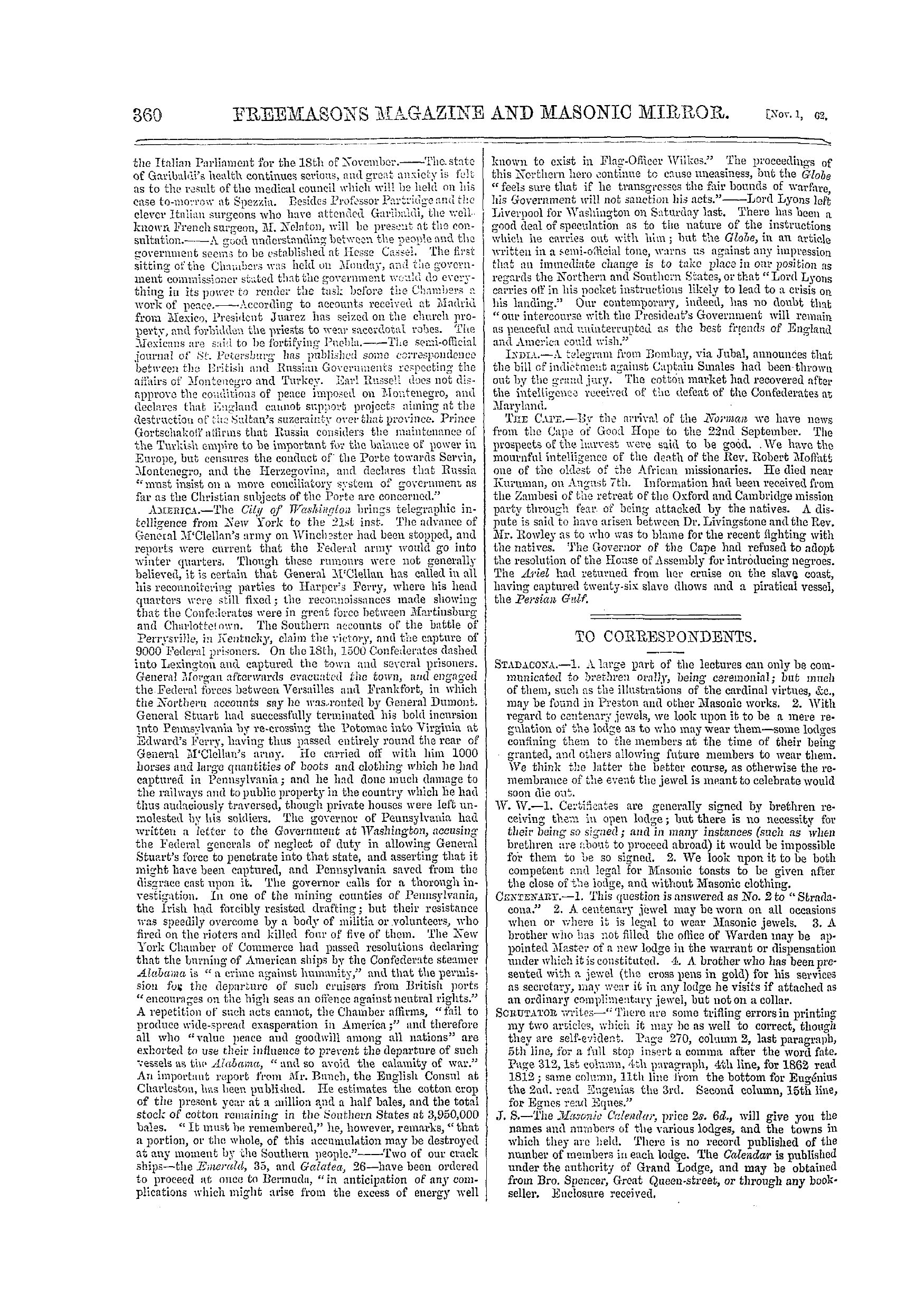-
Articles/Ads
Article CHROMO-LITHOGRAPHS. Page 1 of 1 Article THE NEW THEATRES IN PARIS.* Page 1 of 3 →
Note: This text has been automatically extracted via Optical Character Recognition (OCR) software.
Chromo-Lithographs.
CHROMO-LITHOGRAPHS .
AVe have lately inspected Messrs . George Rowney and Co . ' s beautitul collection of chromo-lithographs , which are being exhibited ( free ) at their gallery in Rathbonep lace , and have seldom been more delighted with specimens of this interesting art . Here may be seen exact copies of the best productions of our most celebrated artists , amongst them may be mentioned J . AY . M .
Turner , E . A . ; C . Stanfield , R . A . ; W . Mnlready , R . A . ; S . Cooper , R . A . ; D . Roberts , R . A . ; P . AY . Topham , T . M . Richardson , T . Collingwood Smith , B . Dolby , Herbert , AY . Hunt , T . R . Rowbotham , J . Burgess , J . Bnrrell Smith , E . A . Goodall , T . L . Rowbotham , J " . Sver , TTS . Cooper , J . B . Payne , G . Fripp , W . Leitch , S . Palmer , J . D . Harding , and numerous others . The originals being
from the pencils of various artists , it may be readily eonceived that they represent a diversity of style , yet this is no bar to their being fairly produced through the process of chromo-lithography in . the hands of Messrs . Rowney and Co . ; but that class of picture which shows to the greatest perfection is where lake and mountain scenery is introduced . Some of these most worthy of
mention are Turner ' s "Yenice-, " "Yenice , " by Stanfield , and "Como , " by T . Collingwood Smith . These three pictures alone are well worth a long Walk to get a peep at ; they are elaborately drawn and coloured , showing the lines of architecture accurately defined , and the various shades , and tints as true to nature as can be possibly imagined . We recommend our readers to inspect this beautiful collection of the finest specimens of chromo-printing extant .
The New Theatres In Paris.*
THE NEW THEATRES IN PARIS . *
The completion , m Paris , of new theatres , whereiu novel methods of lighting and ventilation have been adopted , has led to expectation that we should give some account of the arrangements , which are obviously of much importance to decision of questions of procedure in the future planning and general architecture ofthe class of buildings . Without being able at the moment to
comply full } -, we can at or . ce afford some particulars which will be interesting . It may be well first , for the information of those who may visit the French metropolis , to explain what are the theatres receiitly completed or in progress , —since some of the London morning journals have correspondents in Pariswho do not take trouble to be correct in names
, and identification of sites . Mr . Boucicault ' s recent letter moreover , in another morning paper , does not seem to us quite correct as to the number of new buildings actually completed . The prolongation of the Boulevard Prince Eugene , north-westerly , to join the Boulevard du Temple at the northern end of the latternear the Chateau d'Eauhas
, , entailed the destruction of , we believe , six theatres which stood altogether , lining tho eastern side of the boulevard within the short space required for the new opening . These theatres are , or were , the Theatre du Cirque , the Theatre de la Gaiete , the Theatre des Folios Dramatiques , the Theatre des Funambules , the Theatre des Delassemens Comiques , and the Theatre du Petit Lazari .
It is possible that we have named the Theatre Lyrique or Historique , also , as one of the buildings to be destroyed . We are now informed , however , that the building on the Boulevard du Temple will remain , being only made to revert , from its later use as an opera-house , for which it has been considered ill-adapted , to something resembling its oriinal destinationor to the provision of a homo
g , for one ofthe companies ejected from the neighbouring buildings . The new Theatre Lyrique , which it is hoped Will fulfil all the conditions of acoustics concerned in the effect of musical iierformances , is one of the buildings which we have to give some account of .
Besides the buildings completed , or which may have been commenced , in different quarters of Paris , in partial substitution for those now destroyed , there are at least two other works of theatrical architecture to be counted ' as of the current time , those of the new opera-house on the Boulevard des Capucines , in place of the building in the Rue Lepeletier ; and the additions ( not touching the
salle ) to the Theatre Francais , which include a new south front to the place recently formed between 'the Palais Royal and tbe Rue Richelieu , where the latter enters the Rue St . Honore , ui tne tticatres namecf tne
seven we nave as on Boulevard du Temple , the theatre lately called Lyriqne , and previously Historique , or Montpensier , is the most recent in date . The Salle is remarkable for width , great in proportion to the other dimensions measured , from the proscenium to the boxes . The Theatre du Cirque ( sometimes called Cirque Imperial , as well as Cirque Ol ique ) which was next to the building last
ymp , named , on the boulevard , was built about the year 1826 .. for Franconi , who succeeded the Astloys in the management of equestrian performances in Paris . Though , retaining its name , it was lately devoted to ordinary theatrical entertainments , and was arranged accordingly . This building must not be confounded with the circus of which Mr . Hittorff was architectCirque Napoleon
, , Boulevard des Fillos-du-Calvaire , which is on the same line of eastern boulevards , any more than with the circus , Cirque do l'Imperataice , of the Ckamps-Elysees , also a work of Mr . Hittorff . The Theatre des Folies Dramatiques was built in 1830-1 on the site which was that of the origigal theatre de VAmbigu , built in 1 V 86 with an interior "de . style gothique" and destroyed bfire in
, y 1827 . The new Theatre des Polies Dramatiques , of which the building is now being roofed in , is in the Rue de Bondy , near the . Marche aux Fleurs . The Theatre des Delassemens Comiques on the boulevard was built in 184-1 , occupying only three months in its construction .
A building which preceded it , having been erected in 1815 , was under the direction of Madame Saqui , ancl was celebrated for pantomime and rope-dancing . A previous building erected in 1768 was called at different times " Theatre des Asscocies " and " Theatre sans Pretention . " The company of the Delassemens Comiques was to quit the boulevard on the 15 th of April last ; and it has , we
believe , since that time , found a home in the Rue de Provence , opposite tho end of the Rue Lepeletier , in premises , altered for the purpose , which lately were in part the gallery of works of art , called the . " Galerie des-Arts-Unis . " The Theatre du Petit Lazari dated from 1821 . Till 1830 it was a theatre of Marionnettes . We are not aware whether there is any new building in
progress . The date of the Theatre de la Gaiete wo have not at hand . This theatre had been celebrated for some time past , for the representation of " Le Courrier de Lyon , " a drama which is still running at the new building , which is in the Rue du Caire , close by the Square des Arts-et-Metiers ancl leading out of the Boulevard de Sebastopol , Rive Droite .
AVhen it became apparent that new theatres would have to be built , urgent applications were addressed to the Prefecture of the Seine , ancl the Prefecture of Police , in favour of remedying the insufficient ventilation and other defects of the existing buildings . Conditions of the construction were therefore imposed upon the directors of the new buildings . The ultimate effect of these
stipulations was that the city of Paris was itself obliged to undertake the building of the two edifices , the Theatre Lyrique , ancl the Cirque Olympique , or Imperial . The new Theatre Lyriqne , and the Cirque or Theatre Historique , as the latter new building seems to be now generally called , stand on the quay on the right or northern bank of the Seine , their entrance fronts filling opposite sides of the Place de Chatelet . Coming from , from the south across the Pont St . Michael , and the Pont au Change , the elegant fountain surrounded by trees , is
Note: This text has been automatically extracted via Optical Character Recognition (OCR) software.
Chromo-Lithographs.
CHROMO-LITHOGRAPHS .
AVe have lately inspected Messrs . George Rowney and Co . ' s beautitul collection of chromo-lithographs , which are being exhibited ( free ) at their gallery in Rathbonep lace , and have seldom been more delighted with specimens of this interesting art . Here may be seen exact copies of the best productions of our most celebrated artists , amongst them may be mentioned J . AY . M .
Turner , E . A . ; C . Stanfield , R . A . ; W . Mnlready , R . A . ; S . Cooper , R . A . ; D . Roberts , R . A . ; P . AY . Topham , T . M . Richardson , T . Collingwood Smith , B . Dolby , Herbert , AY . Hunt , T . R . Rowbotham , J . Burgess , J . Bnrrell Smith , E . A . Goodall , T . L . Rowbotham , J " . Sver , TTS . Cooper , J . B . Payne , G . Fripp , W . Leitch , S . Palmer , J . D . Harding , and numerous others . The originals being
from the pencils of various artists , it may be readily eonceived that they represent a diversity of style , yet this is no bar to their being fairly produced through the process of chromo-lithography in . the hands of Messrs . Rowney and Co . ; but that class of picture which shows to the greatest perfection is where lake and mountain scenery is introduced . Some of these most worthy of
mention are Turner ' s "Yenice-, " "Yenice , " by Stanfield , and "Como , " by T . Collingwood Smith . These three pictures alone are well worth a long Walk to get a peep at ; they are elaborately drawn and coloured , showing the lines of architecture accurately defined , and the various shades , and tints as true to nature as can be possibly imagined . We recommend our readers to inspect this beautiful collection of the finest specimens of chromo-printing extant .
The New Theatres In Paris.*
THE NEW THEATRES IN PARIS . *
The completion , m Paris , of new theatres , whereiu novel methods of lighting and ventilation have been adopted , has led to expectation that we should give some account of the arrangements , which are obviously of much importance to decision of questions of procedure in the future planning and general architecture ofthe class of buildings . Without being able at the moment to
comply full } -, we can at or . ce afford some particulars which will be interesting . It may be well first , for the information of those who may visit the French metropolis , to explain what are the theatres receiitly completed or in progress , —since some of the London morning journals have correspondents in Pariswho do not take trouble to be correct in names
, and identification of sites . Mr . Boucicault ' s recent letter moreover , in another morning paper , does not seem to us quite correct as to the number of new buildings actually completed . The prolongation of the Boulevard Prince Eugene , north-westerly , to join the Boulevard du Temple at the northern end of the latternear the Chateau d'Eauhas
, , entailed the destruction of , we believe , six theatres which stood altogether , lining tho eastern side of the boulevard within the short space required for the new opening . These theatres are , or were , the Theatre du Cirque , the Theatre de la Gaiete , the Theatre des Folios Dramatiques , the Theatre des Funambules , the Theatre des Delassemens Comiques , and the Theatre du Petit Lazari .
It is possible that we have named the Theatre Lyrique or Historique , also , as one of the buildings to be destroyed . We are now informed , however , that the building on the Boulevard du Temple will remain , being only made to revert , from its later use as an opera-house , for which it has been considered ill-adapted , to something resembling its oriinal destinationor to the provision of a homo
g , for one ofthe companies ejected from the neighbouring buildings . The new Theatre Lyrique , which it is hoped Will fulfil all the conditions of acoustics concerned in the effect of musical iierformances , is one of the buildings which we have to give some account of .
Besides the buildings completed , or which may have been commenced , in different quarters of Paris , in partial substitution for those now destroyed , there are at least two other works of theatrical architecture to be counted ' as of the current time , those of the new opera-house on the Boulevard des Capucines , in place of the building in the Rue Lepeletier ; and the additions ( not touching the
salle ) to the Theatre Francais , which include a new south front to the place recently formed between 'the Palais Royal and tbe Rue Richelieu , where the latter enters the Rue St . Honore , ui tne tticatres namecf tne
seven we nave as on Boulevard du Temple , the theatre lately called Lyriqne , and previously Historique , or Montpensier , is the most recent in date . The Salle is remarkable for width , great in proportion to the other dimensions measured , from the proscenium to the boxes . The Theatre du Cirque ( sometimes called Cirque Imperial , as well as Cirque Ol ique ) which was next to the building last
ymp , named , on the boulevard , was built about the year 1826 .. for Franconi , who succeeded the Astloys in the management of equestrian performances in Paris . Though , retaining its name , it was lately devoted to ordinary theatrical entertainments , and was arranged accordingly . This building must not be confounded with the circus of which Mr . Hittorff was architectCirque Napoleon
, , Boulevard des Fillos-du-Calvaire , which is on the same line of eastern boulevards , any more than with the circus , Cirque do l'Imperataice , of the Ckamps-Elysees , also a work of Mr . Hittorff . The Theatre des Folies Dramatiques was built in 1830-1 on the site which was that of the origigal theatre de VAmbigu , built in 1 V 86 with an interior "de . style gothique" and destroyed bfire in
, y 1827 . The new Theatre des Polies Dramatiques , of which the building is now being roofed in , is in the Rue de Bondy , near the . Marche aux Fleurs . The Theatre des Delassemens Comiques on the boulevard was built in 184-1 , occupying only three months in its construction .
A building which preceded it , having been erected in 1815 , was under the direction of Madame Saqui , ancl was celebrated for pantomime and rope-dancing . A previous building erected in 1768 was called at different times " Theatre des Asscocies " and " Theatre sans Pretention . " The company of the Delassemens Comiques was to quit the boulevard on the 15 th of April last ; and it has , we
believe , since that time , found a home in the Rue de Provence , opposite tho end of the Rue Lepeletier , in premises , altered for the purpose , which lately were in part the gallery of works of art , called the . " Galerie des-Arts-Unis . " The Theatre du Petit Lazari dated from 1821 . Till 1830 it was a theatre of Marionnettes . We are not aware whether there is any new building in
progress . The date of the Theatre de la Gaiete wo have not at hand . This theatre had been celebrated for some time past , for the representation of " Le Courrier de Lyon , " a drama which is still running at the new building , which is in the Rue du Caire , close by the Square des Arts-et-Metiers ancl leading out of the Boulevard de Sebastopol , Rive Droite .
AVhen it became apparent that new theatres would have to be built , urgent applications were addressed to the Prefecture of the Seine , ancl the Prefecture of Police , in favour of remedying the insufficient ventilation and other defects of the existing buildings . Conditions of the construction were therefore imposed upon the directors of the new buildings . The ultimate effect of these
stipulations was that the city of Paris was itself obliged to undertake the building of the two edifices , the Theatre Lyrique , ancl the Cirque Olympique , or Imperial . The new Theatre Lyriqne , and the Cirque or Theatre Historique , as the latter new building seems to be now generally called , stand on the quay on the right or northern bank of the Seine , their entrance fronts filling opposite sides of the Place de Chatelet . Coming from , from the south across the Pont St . Michael , and the Pont au Change , the elegant fountain surrounded by trees , is
